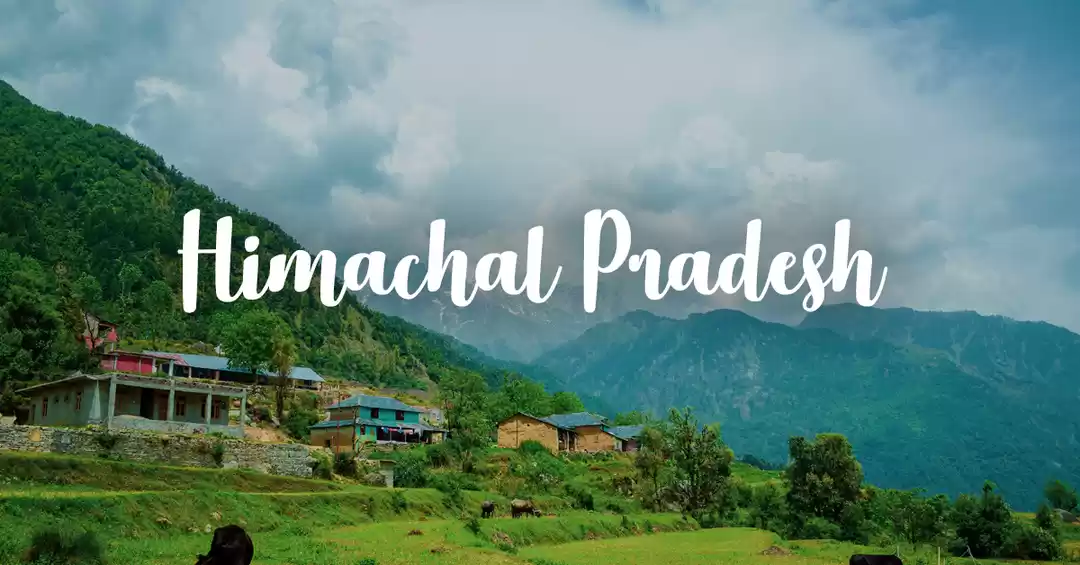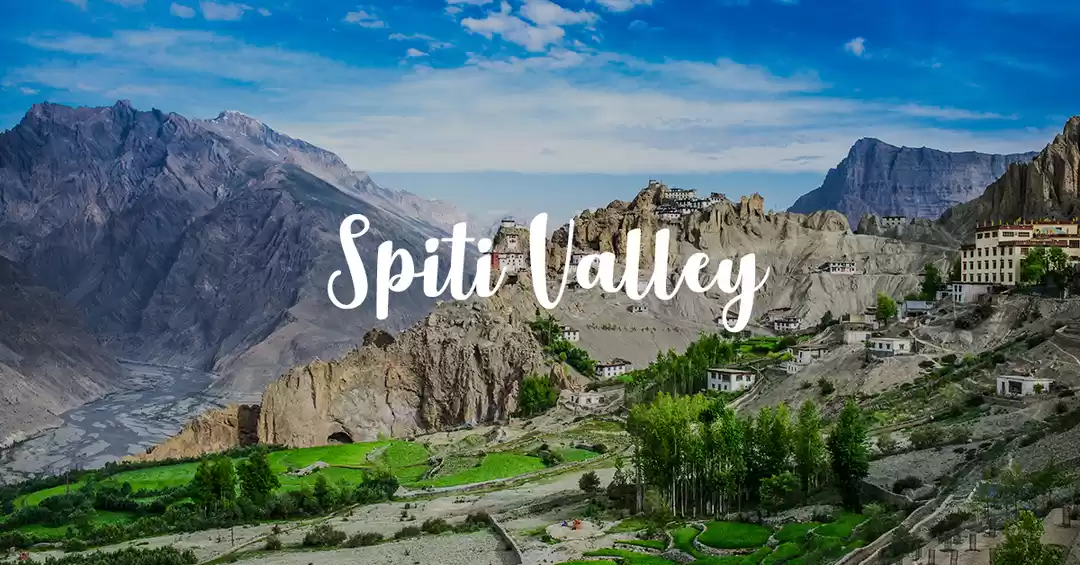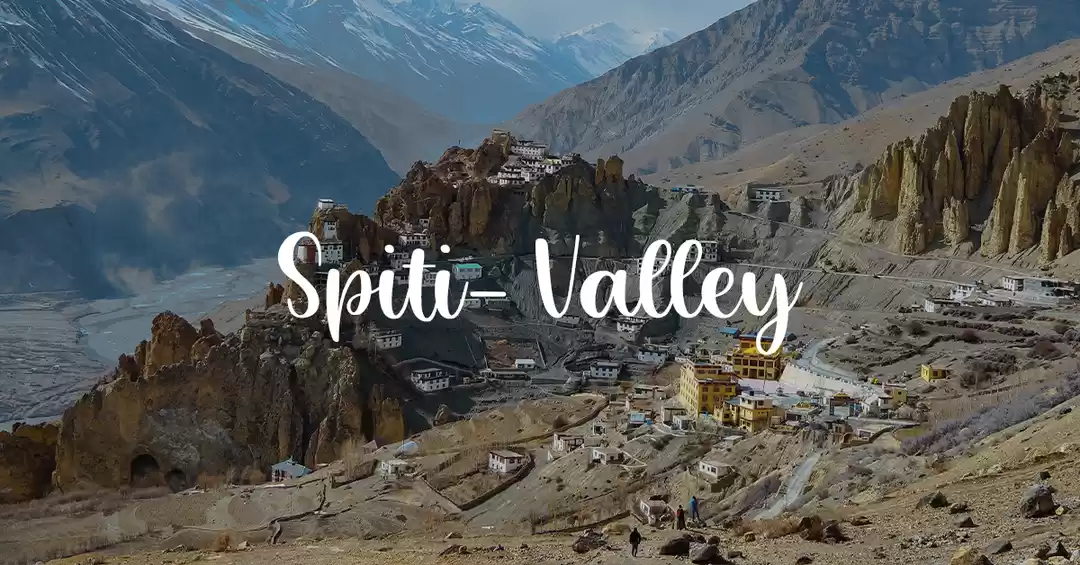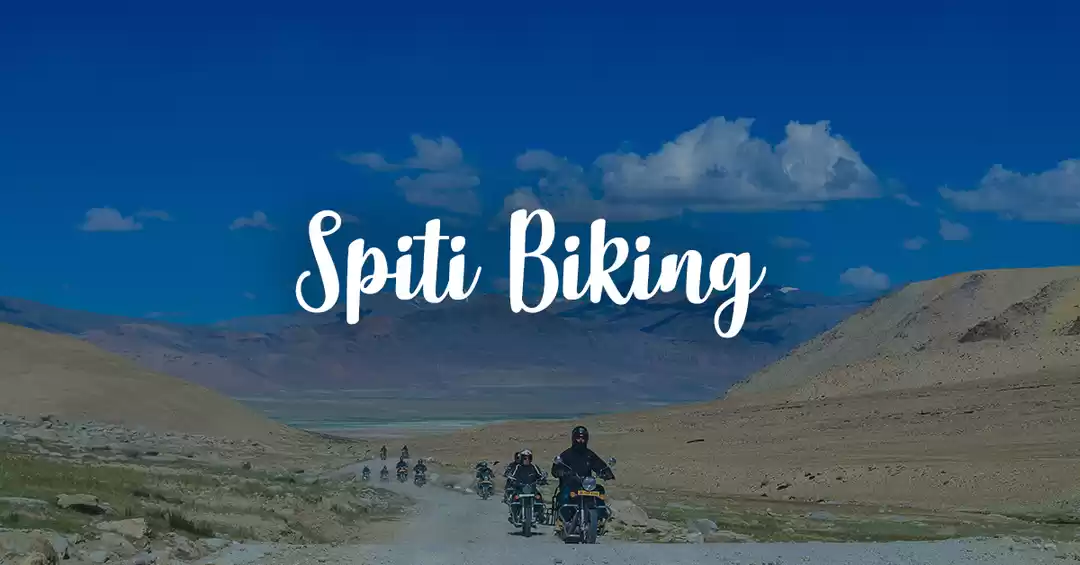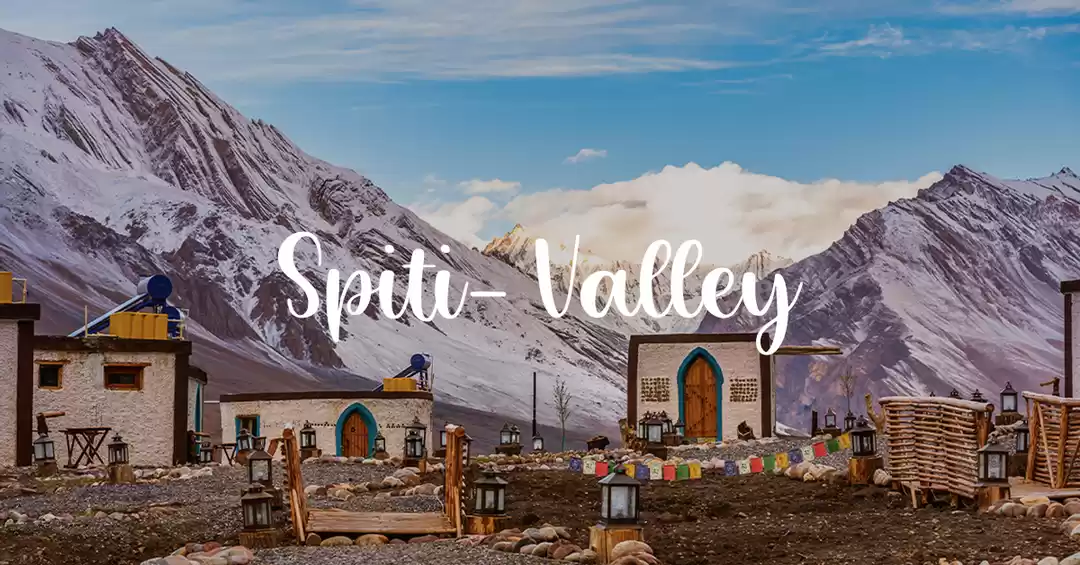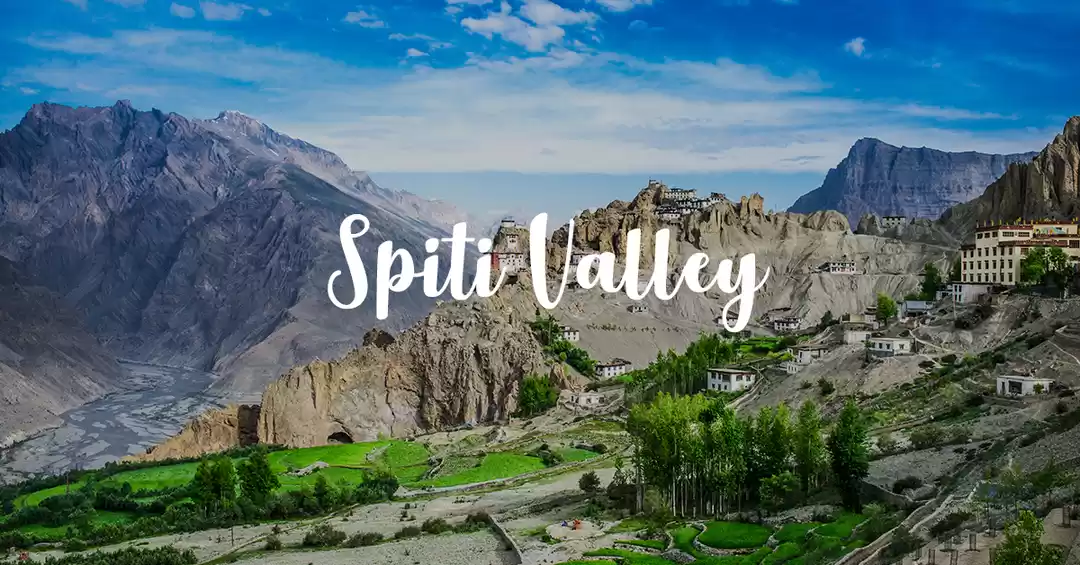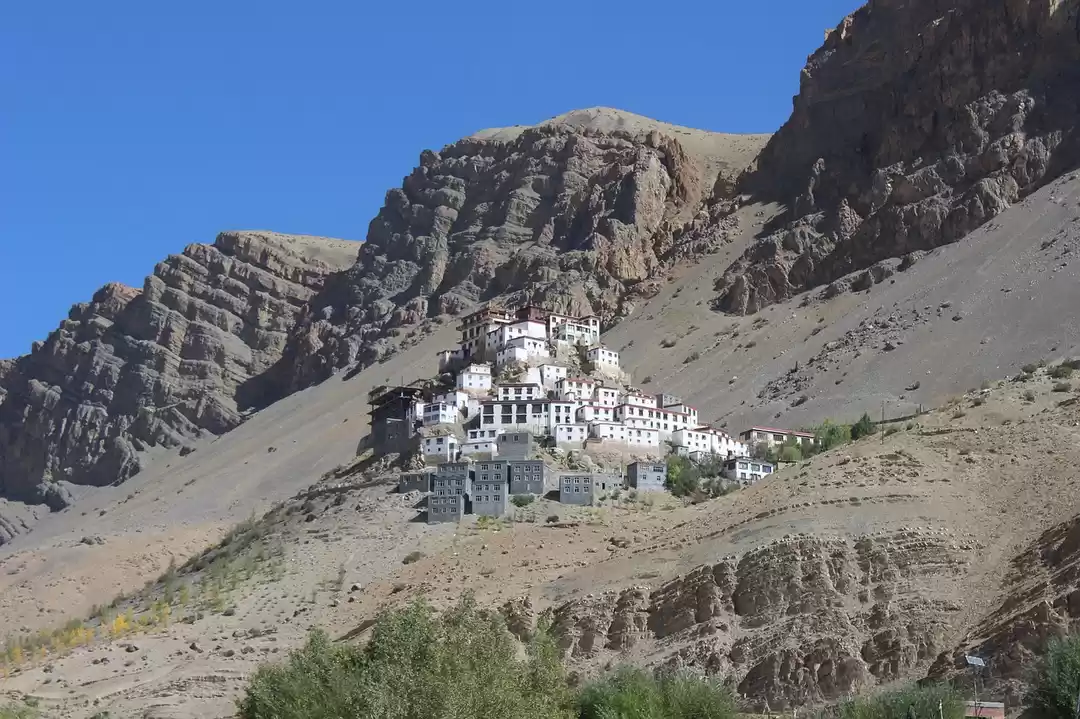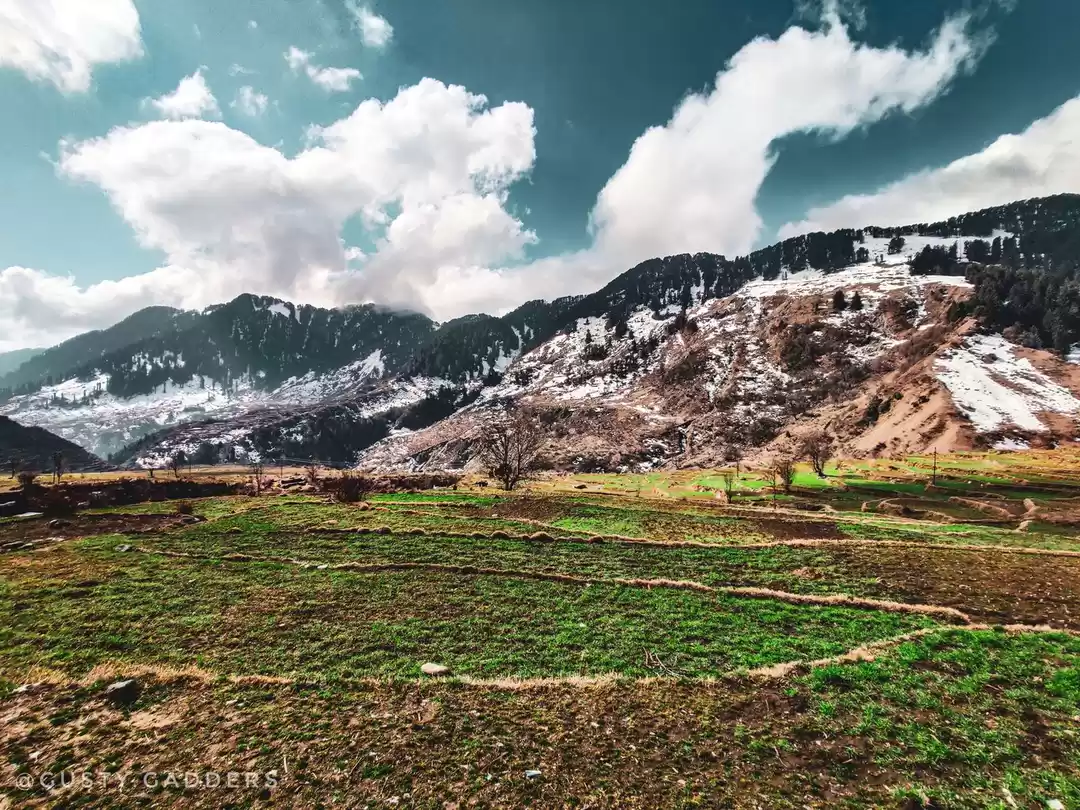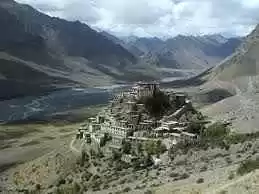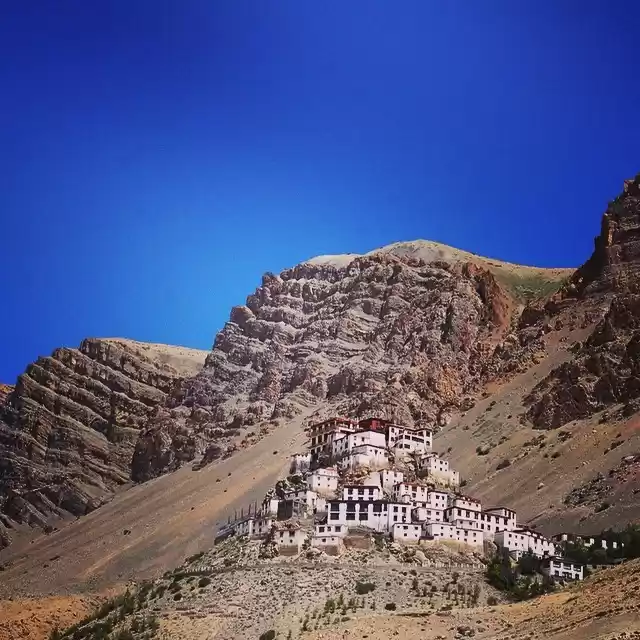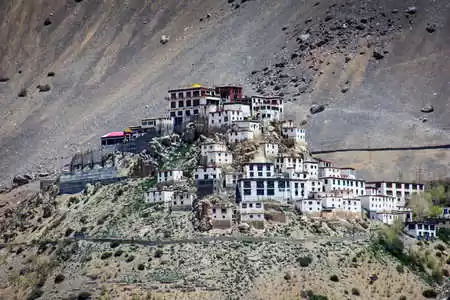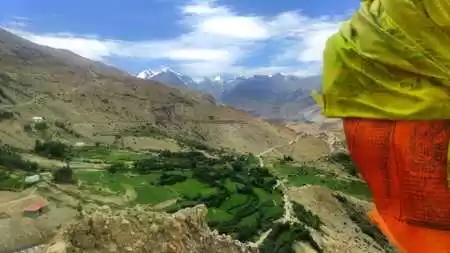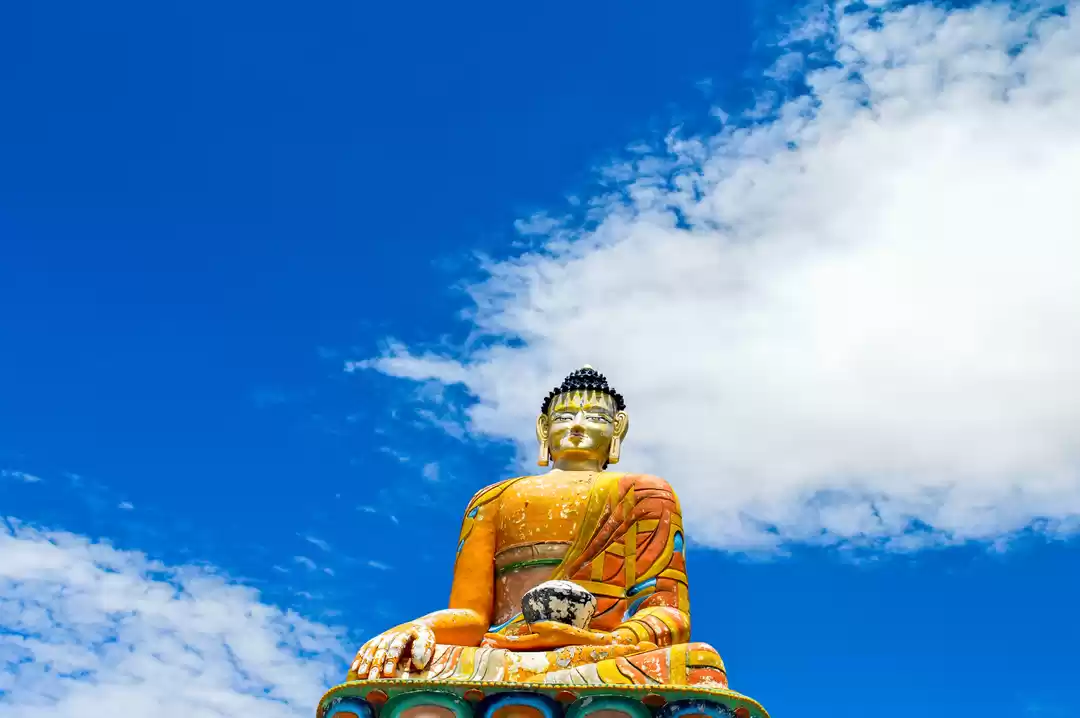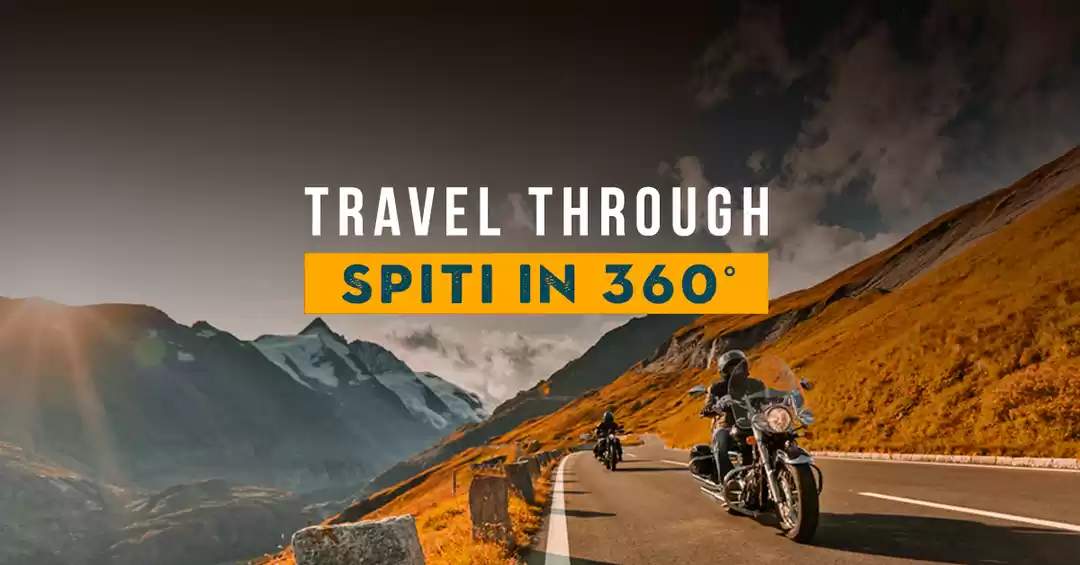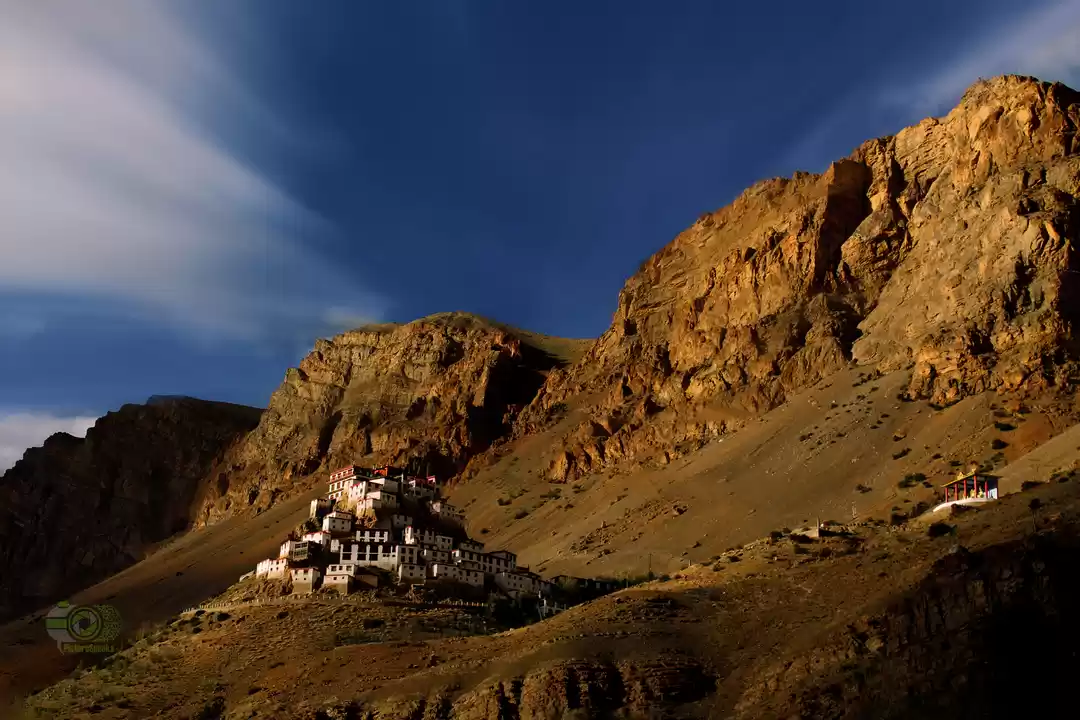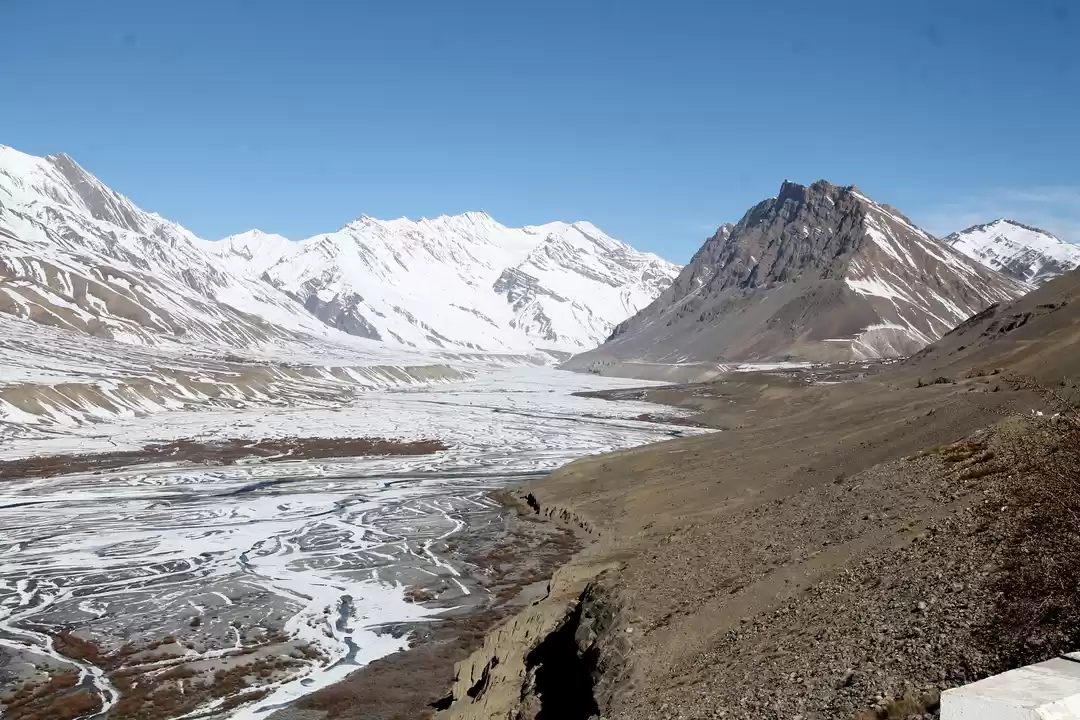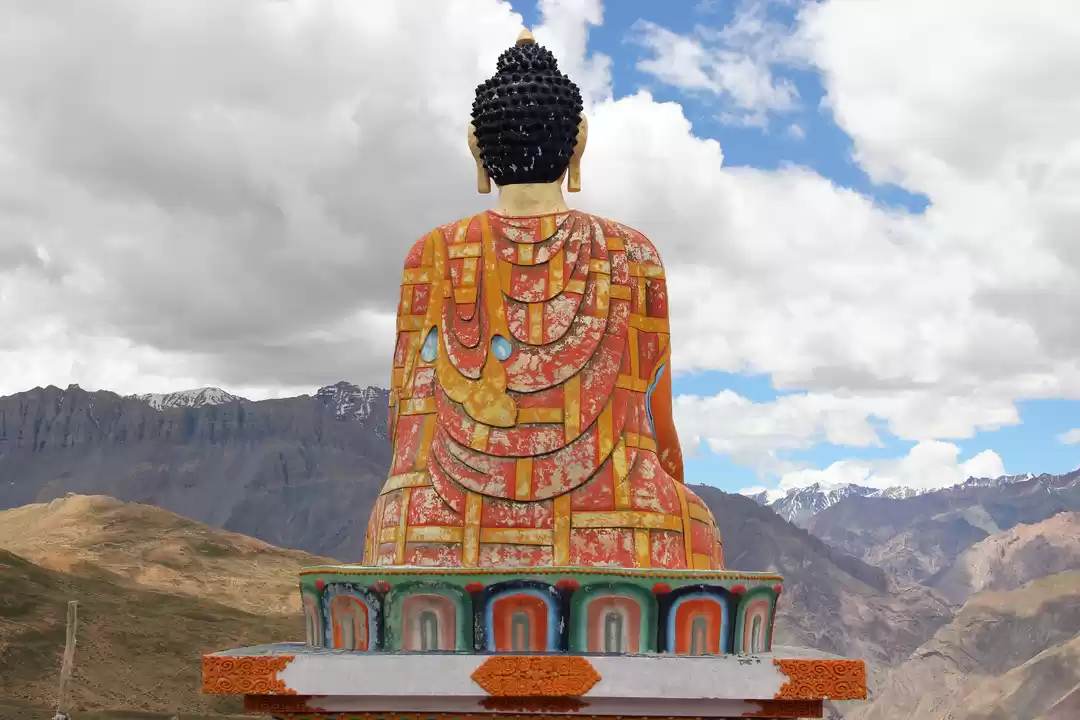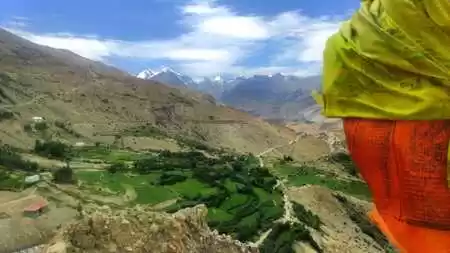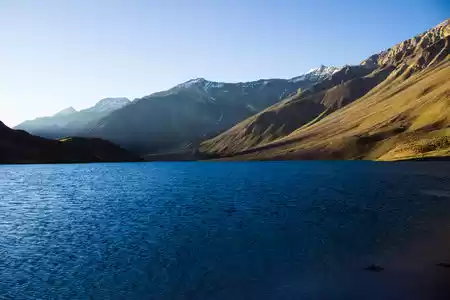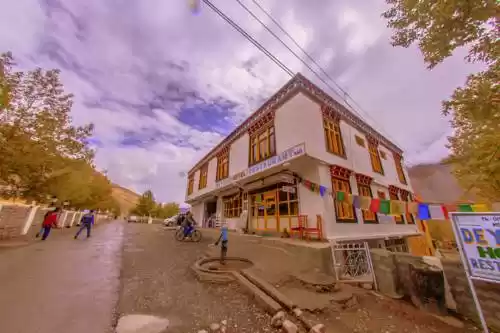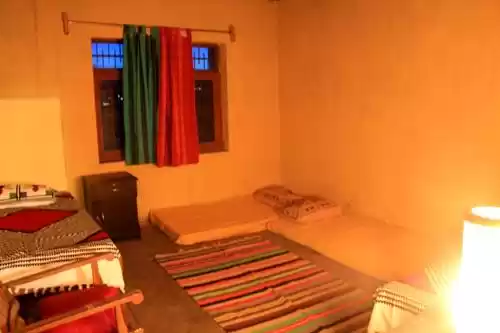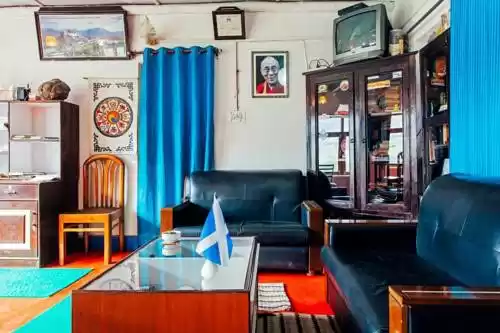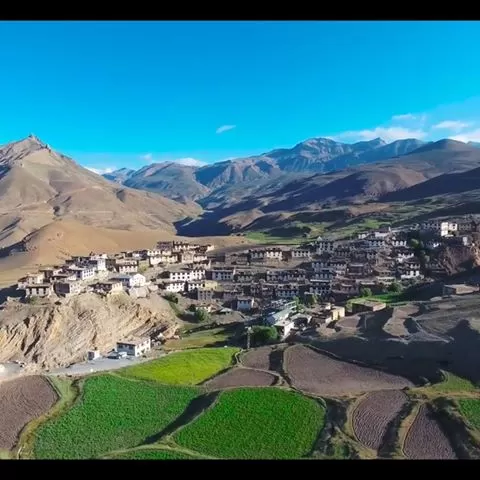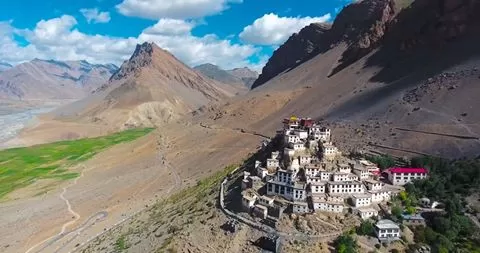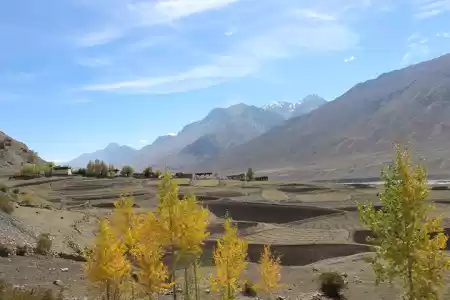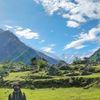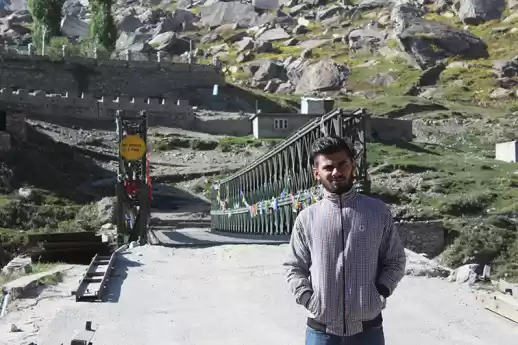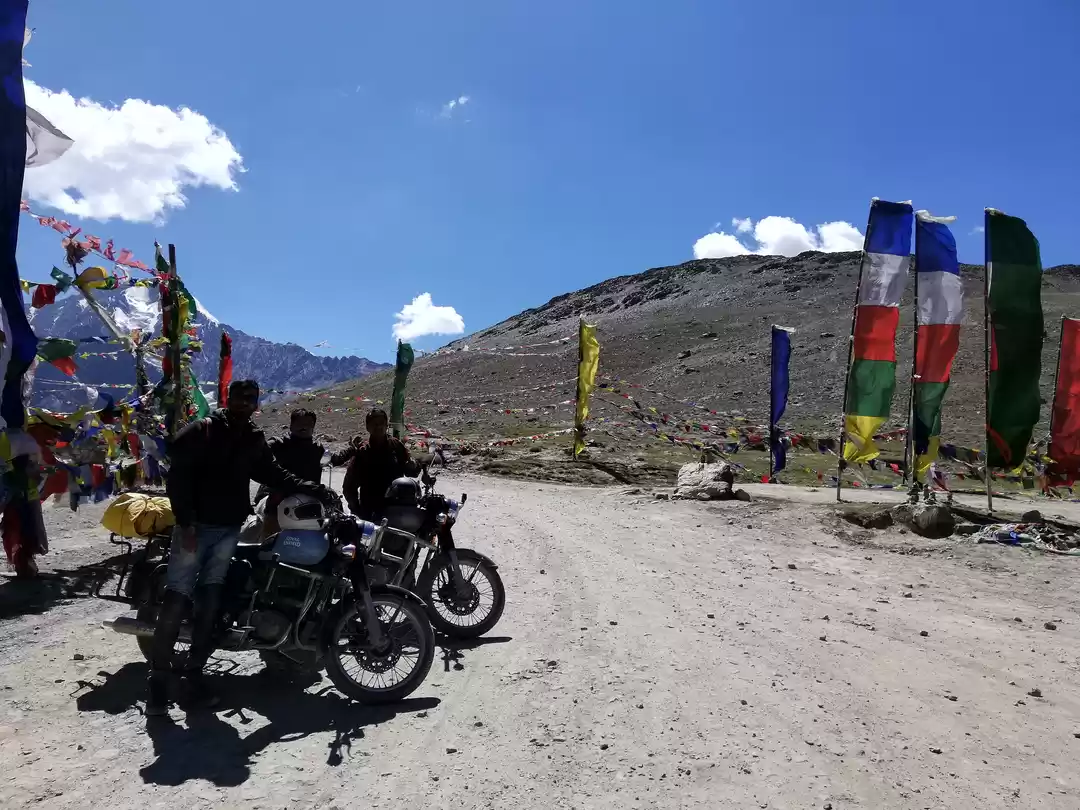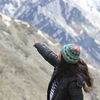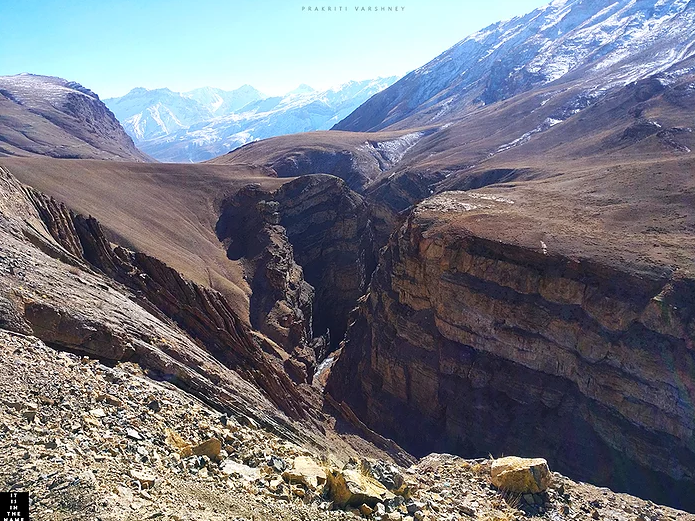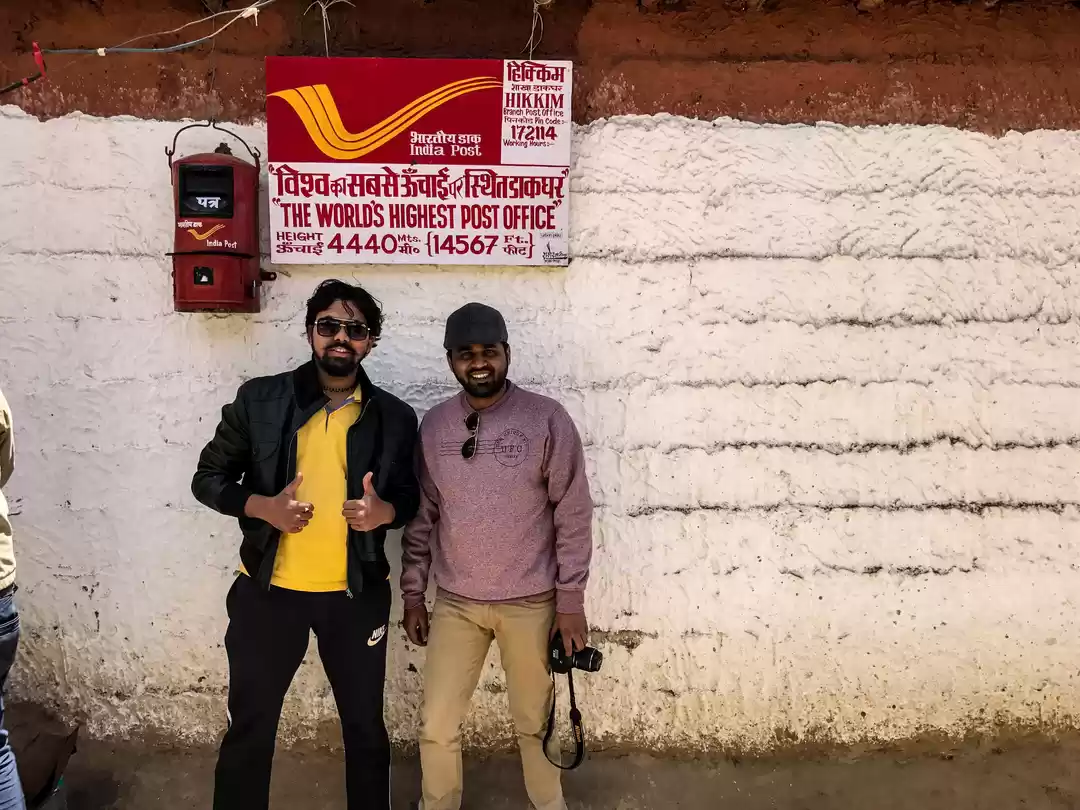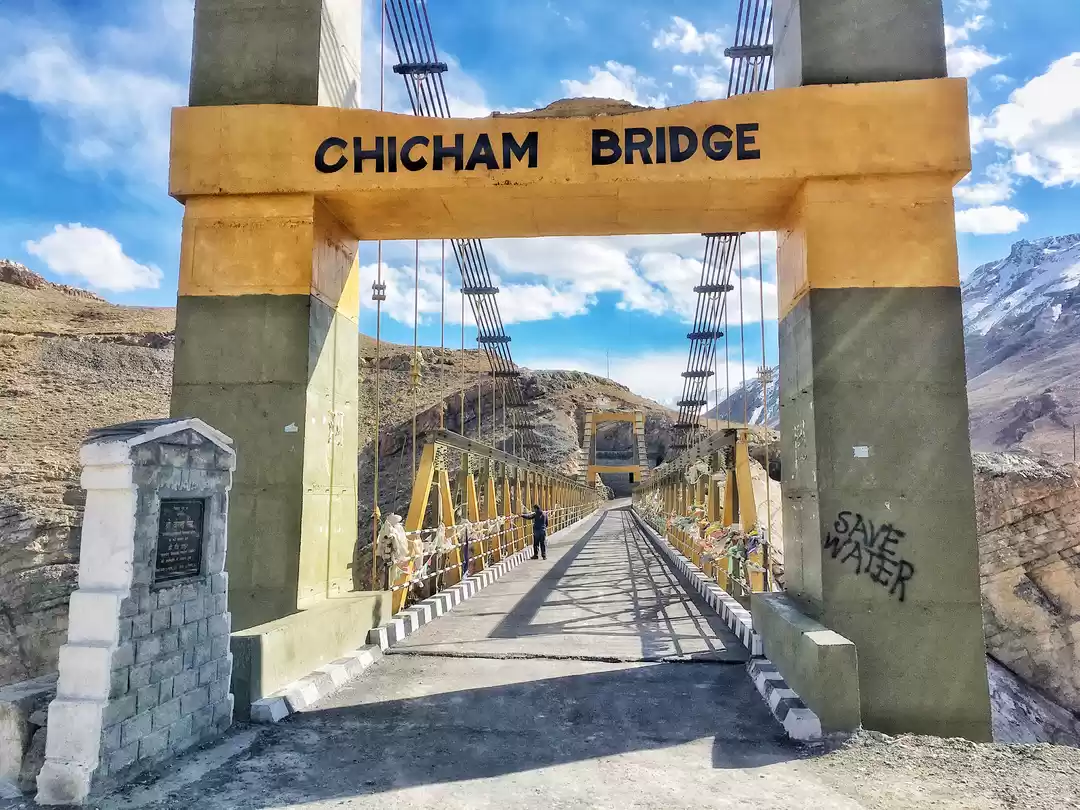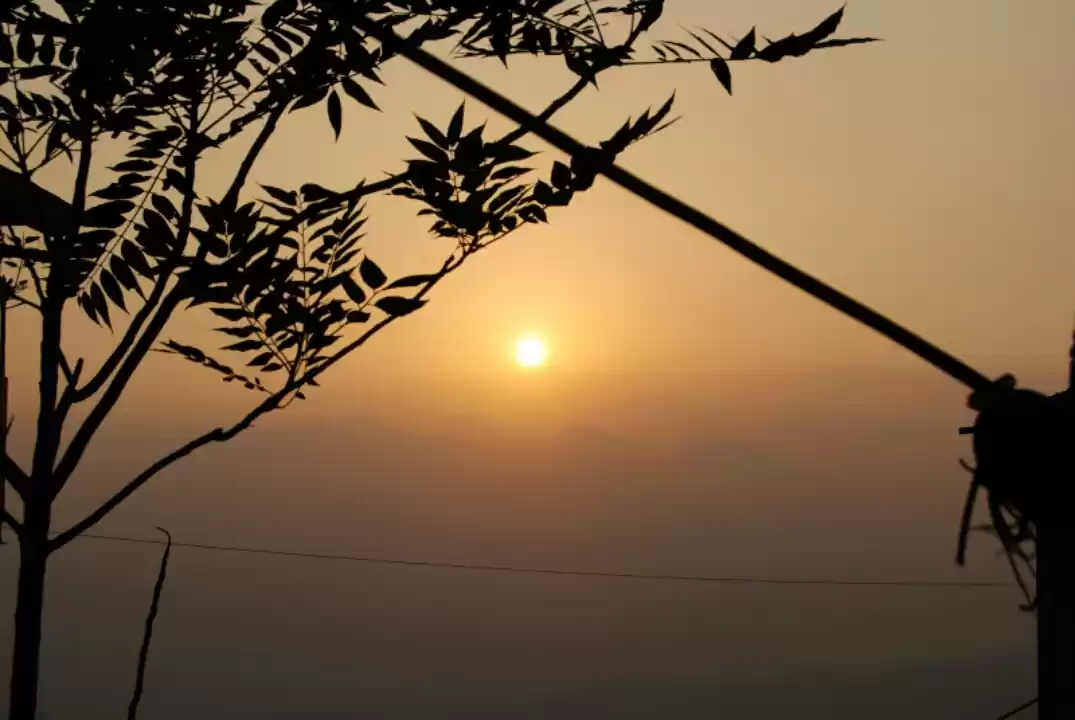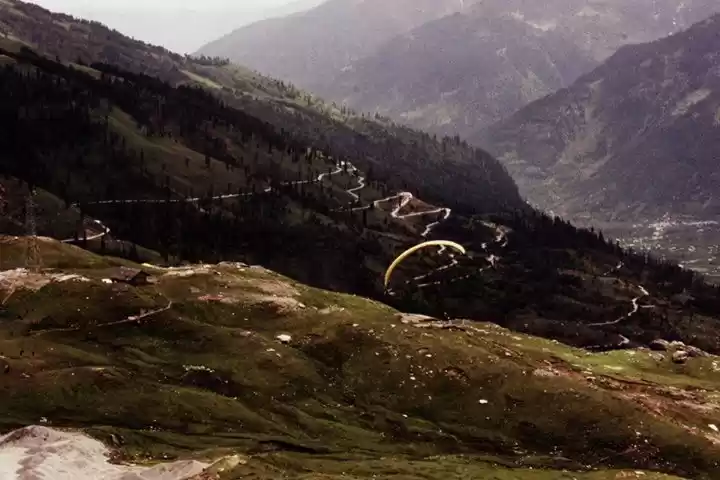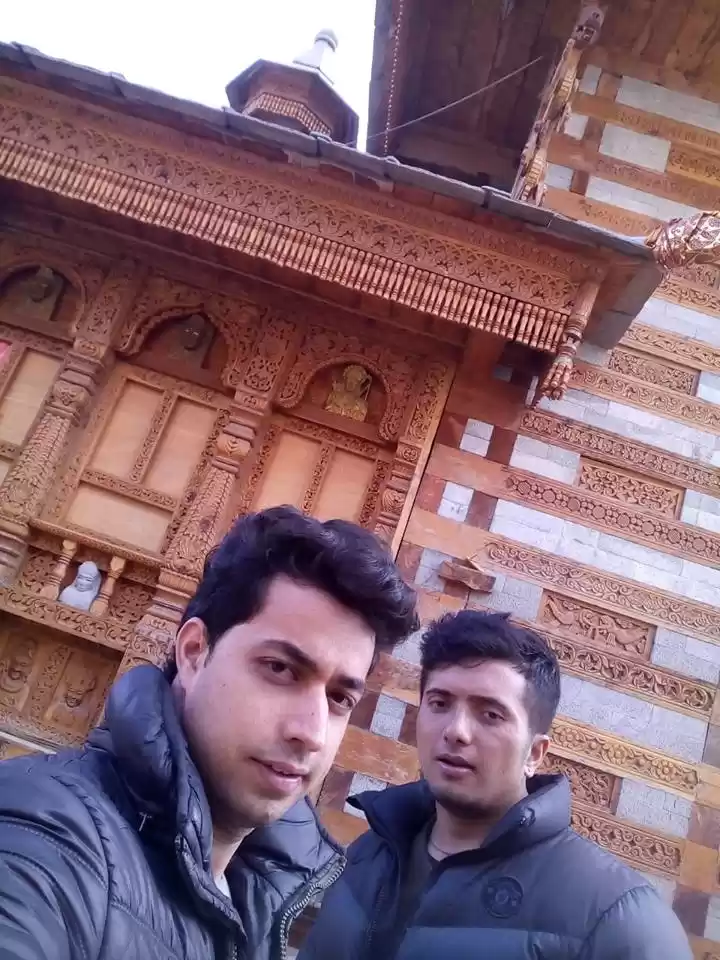Spiti Valley Tourism and Travel Guide
Explore Packages
Tripoto Recommends
Itineraries For Spiti Valley
Best Hotels And Homestays In Spiti Valley
Videos For Spiti Valley
Travel Articles And Blogs For Spiti Valley
Best Time to Visit Spiti Valley
You may know about a number of destinations where you can go almost anytime of the year and still have a great holidaying experience, but the same does not hold true for Spiti Valley, Himachal Pradesh. And the reason is obvious; its location. At over 12,000 feet, you have to go by the rules of nature, even if it means putting off your plans for a more suitable time. Just in case you are planning a Spiti road trip, timing is one of the most basic things you should keep in mind, especially if convenient travelling and witnessing the best of Spiti Valley tourism is one of your priorities.
Peak Season: Mid-May to August
The best time to visit Spiti extends from mid-May to August. This is when the weather is favourable, and most passes, roads, and accommodation are thrown open to travellers who wish to explore the beauty of Spiti Valley tourism. During this time, the Spiti Valley temperatures range between 0°C and 15°C, thereby making it great for sightseeing and other activities. This is also the time when both the Shimla and Manali routes to Spiti, remain accessible.
Shoulder Season: September to mid-October
While it’s just the beginning of autumn in most parts of India, winter just about starts knocking on the doors of Spiti Valley tourism. It starts getting colder at night, but most roads to Spiti are still open and are covered with all kinds of leaves and flowers. Also, the Spiti River becomes a beautiful shade of turquoise, which makes Spiti Valley tourism quite a desirable option for nature lovers.
Off-season: November to mid-May
Unless your plan is to experience the bone-chilling cold, road blocks, and heavy snowfall, this is the time when you should completely avoid choosing Spiti Valley tourism for a holiday. If you didn’t know yet, Spiti in winters is a harsh, cold, and unwelcoming place that is covered with thick layers of snow. While the locals have acclimatised and gotten accustomed to this kind of Spiti climate over the years, a traveller may find it very challenging to cope with unbearably cold Spiti Valley nights.
How To Reach Spiti
Once you’ve decided the time of your visit, the next question is how to reach Spiti Valley. While Spiti may not be the kind of destination where you can simply stuff your backpack with clothes and gadgets, and set off, it is not inaccessible or dangerous to visit, as believed by many travellers. Unlike its cousin, Leh, Spiti Valley tourism doesn’t boast of any airport of its own, nor does it have any railway station. The Spiti Valley nearest airport is in Bhuntar, which is at an approximate distance of 252km, and the nearest railway station is in Kalka, more than 500 km away. The best way to reach Spiti is by road. And that’s why all travellers who wish to experience Spiti Valley tourism should consider every possible aspect of the trip and ready themselves accordingly.
There are two best routes you can take to reach Spiti Valley: via Manali and via Shimla.
Via Manali:
- Overnight journey to Manali (14 hours).
- If you are travelling by a public bus to Kaza, stay for a night in Manali as it helps in acclimatisation.
- Board the early morning bus to Kaza from Manali (12 hours)
Via Shimla:
- Overnight bus journey to Shimla (10 hours)
- Catch a bus to Reckong Peo (9 hours)
- Overnight stay in Reckong Peo for acclimatisation
- Catch the early morning bus from Reckong Peo to Kaza (12 hours)
While it will take you more time to reach Spiti Valley via Shimla, the route remains open throughout the year, and also gives you a better chance of acclimatisation.
We recommend you complete the circuit, i.e, go via Shimla, stay at Reckong Peo, Nako and Tabo and return via Manali. This will allow you to visit the famous Chandratal Lake on your way back to Manali and get a comprehensive experience of Spiti Valley tourism.
Top Places To See In Spiti Valley
Key village
Key is a small village located along the banks of Spiti River and is famous for centuries-old Key Monastery, also known as Key, or Kye Gompa. Located about 18km from Kaza and about 4,000m above sea level, Key is a thinly-populated and incredibly beautiful village where a majority of the locals follow Buddhism. It is connected by a motorable road with Kaza and nearby villages of Spiti Valley tourism. The Key Monastery sitting atop the cliff is the biggest Buddhist monastery which also serves as the religious centre for the llamas. Both the monastery and the village offer panoramic views of snow-capped peaks and rugged mountains that stand tall like some guardian, rendering the place an ethereal look; a top attraction of Spiti Valley tourism.
Nako village
Located in Kinnaur district of Himachal Pradesh, at an elevation of around 3,600 metres, Nako is a quaint hamlet that is situated on the route to Kaza and is considered as the gateway to Spiti Valley tourism. Apart from the spectacular views of Reo Purgyil — the highest peak in Himachal Pradesh — Nako is also famous for a beautiful man-made lake and an ancient Buddhist monastery. There are ample homestays and restaurants in the village, which means that you must stay for at least a day in Nako to experience its food and culture before you start the journey to explore Spiti Valley tourism.
Tabo village
It’s another small and beautiful village in Spiti Valley known for its monastery, the history of which dates back to 996 A.D. The monastery is believed to be one of the holiest of all.
Chandratal Lake
You might have seen those Spiti Valley tourism pictures which have a lake surrounded by moon-like landscapes. That’s the Chandratal Lake. Sitting serenely at an elevation of around 4,250 metres, Chandratal Lake is considered as the origin of the sacred River Chandrabhaga and is a hallmark of Spiti Valley tourism. There’s a motorable road that stops 2km short of Chandratal Lake. Then you have to trek the remaining distance and if you can manage to reach there by around sunset, you’ll be welcomed with other-worldly sights. Not for nothing is it known as the ‘moon lake’!
Kibber
Kibber, or Kyibar, is a tiny village in Spiti Valley tourism located around 5km from the Key Monastery. At around 4,270 meters (14,010 feet), Kibber is the second highest village in the world. It is famous for the Kibber Wildlife Sanctuary, India’s only cold desert wildlife sanctuary. The sanctuary is home to many rare animals such as the elusive snow leopard, ibex, blue sheep, red fox, Tibetan woolly hare, Himalayan wolf, lynx, pika, and Tibetan wild ass. Apart from this, Kibber offers unparalleled views of stunning landscapes that surround this gem of Spiti Valley tourism. The village also serves as the base camp for Mount Kanamo trekkers.
Chicham
Chicham Village or Chicham Khas is another small and peaceful hamlet that lies in the northeastern part of Spiti Valley, connected to Kaza by the famous Chicham bridge. This small village of around 110 people has typical white and red houses made of mud, something that’s quite common in Spiti Valley tourism. Until 2017, the villagers in Chicham used to cross the 150-metre gorge using a self-operated manual ropeway to travel to Kaza and other nearby villages as there was no motorable road. However, Chicham bridge, which is also the highest bridge in Asia, was built in 2017 and that ended the life-threatening method of crossing over the canyon for the villagers. One look down the bridge and you’ll know why Chicham Bridge is a must visit attraction in Spiti Valley tourism.
Langza
The picturesque village of Langza is not only famous for the iconic Buddha statue and the sheer natural beauty that encapsulates this tiny settlement, but is also thronged by tourists interested in collecting fossils that can be found here. You can either collect your own, or buy some from the villagers who sell these at very nominal prices. Once you’re done, get a homestay, enjoy the company of locals, and give yourself a chance to get a first-hand experience of Spiti Valley tourism.
Komik
Also known as Kaumik, this small village is officially the highest village in the world that is connected by a motorable road. Located at a staggering altitude of 15,049ft, Komik also has a famous restaurant where most travellers stop by to have a snack and click pictures before travelling onwards. Apparently, it is the top highlight of Spiti Valley tourism.
Hikkim
Hikkim houses the highest functional post office in the world. Located around 4,440 meters (14,567 feet) between Komik and Langza villages, the Hikkim post office is run by India Post since 1983 and is a well-known attraction of Spiti Valley tourism.
Pin Valley
The stunning Pin Valley was formed by the Pin River that flows through this valley before eventually merging with Spiti River. This valley is also home to the famous Pin Valley National Park where the rarest flora and fauna can be found, including the snow leopard. Unlike Spiti Valley, Pin Valley has the Pin River flowing right through it and is flanked by lush green vegetation with outrageously beautiful snow-capped mountains in the background. If the pleasant sun, stunning views, colourful forests, enchanting peace, and miles of isolation is your thing, Pin Valley is that one attraction you must not miss in Spiti Valley tourism.
Dhankar
Around two hours from Kaza is another peaceful village called Dhankar. It is famous for the 1,042-year old Dhankar Monastery, also known as Dhangkar Gompa, that sits quite precariously on a 1,000-feet high cliff. Overlooking the confluence of Pin and Spiti rivers, this historic monastery offers unimaginable peace and surreal views of Spiti Valley tourism that are hard to describe in words. Apart from the monastery, Dhankar is also famous for a high altitude lake which can be reached after completing a 2km trek from the monastery. No wonder Spiti Valley tourism places Dhankar and its attractions on top of the list of must visits.
Kunzum Pass
Mountain passes are always fascinating, especially to those who love the idea of having an adventure on the road. Connecting Lahaul with Spiti, Kunzum Pass, at 4,590 metres, is one of the highest mountain passes in the world. Offering jaw-dropping views of Chandrabhaga Range. Not many are able to take time to visit and enjoy the views at Kunzum Pass, but if you wish to enjoy a wholesome experience of Spiti Valley tourism, Kunzum Pass is a must visit.
Activities And Things To Do In Spiti Valley
Wildlife safari at Pin Valley Reserve
Pin Valley National Park is a wildlife reserve that’s home to ethereal natural beauty and the rarest of plant and animal species in Spiti Valley including snow leopard, Tibetan gazelle, Siberian ibex, snow partridges, Himalayan snowcocks, and more. It may not precisely be a part of Spiti Valley tourism, but a wildlife tour in this bio reserve is one of the best things to do in Spiti valley, for it allows you to spot the shy and rare snow leopards. For wildlife photography enthusiasts, a wildlife safari in Pin Valley Reserve is an unmissable experience if you are already on your way to explore Spiti Valley tourism.
Camping at Chandratal Lake
Chandratal is one of the best places to visit in Spiti Valley, and one of the key highlights of Spiti Valley tourism. The lake derives its name from its crescent moon-line shape. Its moon-like surroundings, with the snow-capped peaks in the backdrop, and the blue of the lake make it seem like it has been placed there artificially. It also serves as a perfect camping and stargazing spot for travellers.
Hike to Dhankar Lake
Besides its 1,042-year old monastery, . Dhankar is also known for the picture-perfect Dhankar Lake, that sits about 4,200 metres above sea level. The 2km trek to the lake may seem challenging, but the natural beauty and pristine environment of this Spiti Valley tourism site will make the effort well worth it.
Visit Chicham Bridge
At approximately 13,993 feet, Chicham Bridge is the highest bridge in Asia, connecting Kibbber and Chicham Khas villages that were once separated by a 1,000-feet deep canyon. The stiffened steel truss bridge was constructed in August 2017 by the Border Roads Organisation (BRO) and is now a popular attraction for tourists choosing Spiti Valley tourism over other famous hill towns in Himachal Pradesh.
Stay at Key Monastery
If you want to get the real experience of Spiti Valley tourism, you must take time to stay for a day or two at Key Monastery, a Tibetan Buddhist monastery perched atop a hill at an altitude of 4,166 metres. Not only will you understand the lifestyle of the lamas, Buddhist culture, and practices but you will also get a chance to witness the most scenic landscapes from the best vantage point in Spiti Valley.
Visit Giu village
Lying somewhere between Tabo and Sumdo at around 10,000 feet above sea level, Giu is a small village of Spiti Valley tourism that has been made famous by a 500-year-old mummy which, according to a legend, belongs to a meditating lama. The mystery is that the hair, teeth, and nails of this mummy are still growing normally. You wouldn’t want to miss something like that, would you?
Experience a homestay in Kibber, Komic, and Losar
Shun hotels and luxury accommodations and instead, stay at the homes of locals who will shower you with their warm hospitality and love. This will not only give you an insight into the local culture, but also help support Spiti Valley tourism. Moreover, you can go looking for ancient fossils in these villages and take them back home as prized souvenirs that you found and didn’t buy!
Enjoy stargazing and night sky photography
Spiti Valley tourism is a haven for nature lovers and photographers, especially for stargazers and astrophotography enthusiasts. With most of the villages situated at an altitude of 10,000 to 15,000 feet above the sea level, you just cannot miss gazing at the star-studded sky. If you happen to be lucky, you might even spot a shooting star whizzing past you!
Send postcards from the Hikkim post office
It might not be cool to send letters in the modern world of instant messaging apps and hi-tech gadgets, but it will once it becomes known that the post received is from the world’s highest post office at Hikkim. Undoubtedly, it is one of the must-do things in Spiti Valley tourism.
Shopping in Kaza market
Kaza is the most developed town of Spiti Valley and hence, best promotes the art and craft of Spiti Valley tourism. Here, you can shop for traditional Buddhist and Tibetan handicrafts, woollen shawls, sweaters, overcoats, prayer flags, and what not!
Make a stack of wishing stones
Spiti Valley tourism has a rare and mystical charm of its own; something beyond the realms of what we can normally see and understand, which is why so many tourists are attracted towards its tricky terrains every year. Talking of which, have you noticed stacks of several small stones in the pictures of Spiti Valley? Well, it’s believed that if you manage to stack seven stones in Spiti, you will soon be greeted with great luck and prosperity. It is also believed to bring better luck to other travellers travelling in and out of the valley. So, why not try this!
Cuisine & Best Places to Eat In Spiti Valley
The valley is home to some of the kindest, most polite, and warmest people in the world. And when it comes to food, a few days of Spiti Valley tourism can render you the time of your life.
Here are a few dishes you must have in Spiti Valley:
Madra
A significant Himachali food with roots in Chamba district, madra is a delicacy, cooked in ghee with a combination of onion-ginger-garlic paste, dry fruits, soaked chickpeas, vegetables, and yogurt base that results in a one kadhi-like dish. It is served with pooris or rotis and is usually had for breakfast. If you want to get a real taste of Spiti Valley tourism, it is a must have.
Thenktuk
Thenktuk is a variant of another Tibetan dish, thukpa and is a favourite cuisine of many who have experienced Spiti Valley tourism before, too. It is a noodle soup with gravy comprising chunks of mutton, chicken, mashed tomatoes, onions, spinach, potatoes, and various other veggies. If you want to have a unique variant of it, you can ask for yak meat pieces as well.
Dhaam
Well, if you don’t know dhaam, you probably haven’t explored Himachal much. It’s a complete meal which includes multiple curries and veggies including the likes of rajma, moong dal, yoghurt, boor ki kadh, and aromatic rice, usually served in disposable plates made of leaves. While the lip-smacking dish is usually served in local functions and weddings, you can also get them at restaurants in Spiti Valley tourism.
Tudkiya Bhath
Tudkiya bhath, or fried rice, is generally the Himachali form of pulao. It is prepared using a combination of white rice, potatoes, lentils, onions, tomatoes and yoghurt, which is later topped with cinnamon, garlic, cardamom, ginger, chilli powder and bay leaves. This easy-to-cook dish in Himachal has been known to find many lovers in people who experience Spiti Valley tourism for the first time.
Chaa Gosht
If you are a meat lover, you can’t just resist it. In this, lamb meat is first marinated and then mixed with the gravy made of yogurt and gram flour. Later, this mixture is topped with red chili powder, cardamom, coriander powder, garlic-ginger paste, and other spices. The result is a mouth-watering dish the taste of which will remain with you forever.
Thukpa
This Tibetan cuisine is one of the most popular dishes in Spiti Valley tourism. Just like many other dishes, thukpa is a delicious soup-based dish which has chicken, mutton, noodles, spicy chutney, onions, garlic, and many other vegetables served hot and fresh. It is easily available at almost all Spiti Valley hotels.
Best Places to Eat in Spiti
1. Dragon Restaurant
Indian, Tibetan
₹300-400 for two
2. Himalayan CafeOld Kaza, Spiti Valley, Himachal Pradesh, India
Indian, Continental, Chinese
₹500-700 for two
3. Sol Cafe
Indian, Tibetan
₹200 for two
4. Mahabuddha Restaurant
Multi-cuisine
₹300-400 for two
5. Yak Cafe
Tibetan, Continental, Chinese
₹200-300 for two
6. Noryang Restaurant
Tibetan, Continental, Indian, Chinese
₹200-400
Typical Costs in Spiti Valley
For Budget Travellers: ₹600-1,000 a day
- Accommodation in hostels and guesthouses: ₹400-700
- Food: ₹200-300
For Mid-range Travellers: ₹2,200-4,000 a day
- Accommodation in mid-range hotels: ₹1500-2700
- Food: ₹700-1000
For Luxury Travellers: ₹4500 and upwards
- Accommodation in high-end hotels: ₹3,000 and upwards
- Food in hotel restaurants and bars: ₹1,500 and upwards
Frequently Asked Questions about Spiti Valley Tourism
How many days are required for a comfortable Spiti trip?
Ideally, you need 5-7 days to get the best experience of Spiti Valley tourism.
Is Spiti Valley tourism a safe option for families with kids?
Touring Spiti Valley with family and kids (only above 5 years) is completely safe as long as none of the travellers suffers from any major sickness. As a precautionary measure, it’s recommended that you manage your acclimatisation well, carry basic medication kit, and adequate clothing to avoid falling prey to cold or AMS.
Is public transport available within Spiti?
Spiti Valley tourism has limited public transport. It’s advisable to not completely rely on public transport and hire taxis so that your Spiti Valley itinerary doesn’t get jeopardized.
What are the most important things I must know about Spiti Valley weather?
The most important thing about the climate of Spiti Valley is that winters are very harsh. During winters, Spiti Valley temperature can drop down to -30 degree celsius.
What is the best time to visit Spiti Valley Himachal Pradesh?
The best time for a Spiti Valley trip is between the months of May and August.
Where can I get a homestay in Spiti Valley?
There are ample stay options in Spiti Valley, both government accommodations and private guest houses. However, it is highly recommended that you choose local homestays for an unforgettable experience of Spiti Valley tourism.
Are there any ATMs in Kaza?
Yes, there are two ATMs in Kaza town. However, beyond the main city, you will not find any ATMs.
How much cash should a solo traveller carry for a seven-day Spiti Valley trip?
There is a dearth of ATMs and online transaction facilities in Spiti Valley. As there are only two ATMs in Kaza, you must carry adequate amount of cash, which will vary according to the kind of experience you wish to extract from Spiti Valley tourism. If you’re a mid-range budget traveller, you should carry around ₹12,000-15,000 for a seven-day trip to Spiti and budget travellers should carry ₹8,000-10,000.
What are the necessary items to pack for a Spiti Valley trip in peak season?
Keeping in mind the Spiti Valley altitude and terrain, good quality shoes, a jacket that can keep you warm in -10 degree celsius, a woollen cap, gloves, raincoat, first-aid kit, power banks, sunscreen, and hat are some of the necessary items you must pack to avoid any trouble in Spiti.
Will I get mobile connectivity in Spiti Valley?
The mobile connectivity in Spiti is very unstable. Only BSNL prepaid and postpaid networks are in service. Some places don’t even receive any network, including Kibber, Komic, Langza and Dhankar.
Can I get self-drive rental bikes in Spiti?
Yes, you can rent a bike in Spiti Valley. The bikes are available for rent in Kaza town. However, due to the recent limit sanctioned on the number of bikes rented per day, you may or may not get a bike on the very day you want it. So, you can instead use shared taxi service from Spiti Valley tourism operators.
Written by Anshul Sharma, an in-house Tripoto writer. Besides writing, Anshul loves to travel, read dramas, watch sports news, and try his hand at photography. Follow him to ignite your wanderlust.


